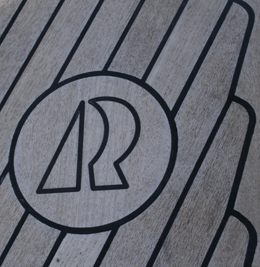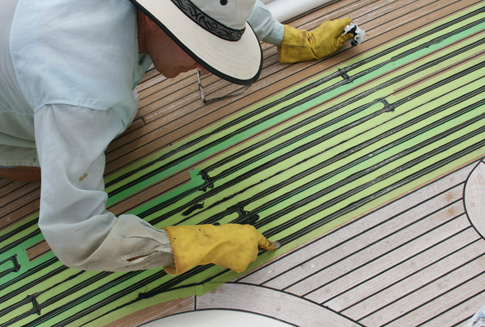A day after clawing my way through the sea of tourists descending from Norway’s most photographed spot, the precipitous ledge known as Priekestolen, it was a relief to find myself far from land aboard a well-found Scandinavian yacht with a sensible Norwegian skipper at the helm. The boat was a lovely Hallberg-Rassy 352 based out of Stavanger, Norway, the gateway to the country’s golden-egg-laying goose, the North Sea oil fields. The marina we sailed out of was once the construction site for the impressive Condeep gravity based structures for oil platforms, but the only evidence of this mammoth operation was a tower-top restaurant overlooking the modern marina and housing development.
The skipper looked just as I’d imagined a Norwegian skipper, complete with ruddy cheeks and a white beard. His name, of course, was Olaf. A police officer just months away from retirement, Olaf told me he had left the boat for a complete refit in Sweden for a year while he was in Liberia on a UN Peace Mission. He’d only recently brought it home to Norway. The overhaul took place on the island of Orust-home to the Hallberg-Rassy, Sweden Yachts, Najad, and Malo-where half of all of Swedens yachts are built. A magnet for talented marine carpenters, Orust might be compared to Southwest Harbor, Maine, or Port Townsend, Wash., in U.S.
In a recent blog post, I wrote about the common costly mistakes that new owners often make when refitting their sailboats. Olaf, who had competed in several ocean races to Scotland and had owned the boat for 10 years, knew better. His refit tab wasn’t cheap-almost half of what the boat might sell for in Europe—but with a long cruise of the Baltic on the horizon, he wanted to do it right.

Sails, rigging, chainplates all got replaced as needed, but the most expensive project was a complete replacement of the teak decks. The crew Olaf contracted in Sweden used a patented vacuum-bagging method that required no screws. Our Sarasota, Fla. neighbors, Teakdecking Systems, uses a similar technique to lay the decks of expensive megayachts and Chris Craft powerboats.
If you have read about PS contributor Joe Minick’s DIY $15,000 teak-deck overhaul in Turkey, then you have an idea of what the project entails. Add the expensive taxes in Scandinavia and the cost of skilled Swedish craftsman into the equation, and you can understand why Olaf would put himself in the line as an advisor to security forces in places like Afghanistan, Pakistan, and Liberia. It pays the yard bills.
The result was stunning. From the immaculate scarfs on the caprail to the elegant HR logo on the anchor locker, the new deck looked as nice as I’ve seen on any fresh-from-the-factory boat. This boat will still be around long after I’m gone, Olaf said cheerfully, as if he was looking forward to the day. (The Norwegian sense of humor takes some adjustment.)
Old teak decks can be a deal breaker for the used boat buyer. Unless the previous owner(s) have taken a white-glove approach to deck maintenance, about 30 years of use is all you can hope for in a modern, 12-millimeter-thick teak deck. The wood’s biggest foe is the scrub brush, which can chew through the soft grain and shave years off the decks life. So if you are looking at an old Taiwanese-built cruiser from the 1970s with a deeply-grooved old teak deck, give it a close inspection, especially the subdeck; you might be biting off more than you can chew. Even if the cored deck below the teak is in good condition, re-caulking and refastening an existing deck is a time-consuming project.
While chandleries are stocked with a range of teak deck cleaners and sealers, the prevailing practice in Norway, explained Olaf, is to do nothing with the deck. A daily rinse with fresh water-no heavy scrubbing-no coatings, no dressing is the only treatment required. Just let the wood go silver. If the boat is left for a long time without any care, mold and dirt can build up to a point where you might need to do something more than water and a soft sponge. We’ve looked at several teak cleaners (see links below) that work for this job, but whatever route you choose, start with the gentlest approach first. And no hard scrubbing.

(photo by Mahina Expeditions, www.mahina.com)
Subscribers who want to check out some of our other teak-deck related tests will be interested in our teak cleaner test and our teak caulk test. And if you insist on a golden-hue new teak finish and don’t mind the extra work, you can check out the results of our wood finish test, which included some products specifically designed for teak decks. (Our more recent 2021 test of wood finishes focused primarily on finishes best suitable for trim.) Otherwise, you can just do like Olaf: Enjoy your golden years with a silver deck, and go sailing instead of seeking perfection.
































